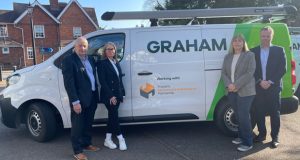Today, all 1,800 company-managed shops have access to a self-service portal to log a maintenance call in a few clicks. Every asset, in every shop, nationwide, is labelled and scanned into the system for identification, with a dropdown selector for problem codes. Providing our shops with a system that has delivered on convenience and ease of use has resulted in an increase in the number of jobs logged by staff for proactive maintenance, but at the same time, it has also made our planning team and engineers more efficient.
Multi-intervention scheduling is a feature that provides us with full visibility of all calls open at every shop. Now, when we receive a reactive service request and schedule the work, the system selects the most efficient route, along with other jobs that have been logged at the shop, so that engineers can complete them all in one visit. It cuts out multiple engineer callouts to the same site and travel time backwards and forwards between sites.
This means our engineers’ time is optimised, fuel consumption and CO2 emissions are reduced, and planning and scheduling is simpler – making us a more efficient team. We also automate the management of planned maintenance, which ensures regular tasks are scheduled and undertaken, reducing reactive callouts.
SUBCONTRACTOR PORTALS
We allocate and alert work directly to our subcontractors through a dedicated portal which gives them real-time access to the job details and asset service history. While on site, subcontractors provide information and costs to be applied to the job, via the portal, and we can monitor job progress and subcontractor performance.
 When engineers need additional parts, they initiate a parts request via their smartphone. This triggers a requirement for the planning desk to place an order, which is delivered to the required shop. When the parts are received, the shop updates the system via their self-service portal, which sends the job for rescheduling to fit parts.
When engineers need additional parts, they initiate a parts request via their smartphone. This triggers a requirement for the planning desk to place an order, which is delivered to the required shop. When the parts are received, the shop updates the system via their self-service portal, which sends the job for rescheduling to fit parts.
Since capturing all our assets in our system, we have recently introduced a new role of equipment lifecycle manager, whose primary focus is to use the data we obtain from the system to determine the optimum lifecycle of our various equipment. This will enable us to plan proactive maintenance more effectively, which in turn should extend the lifespan of our assets, reduce reactive service costs, and make the replacement cycle more efficient. It’s also important to know when equipment is beyond economical repair.
We have even created a workflow in our system to manage space audits, which determine the food order capacity in each individual shop based on the number of equipment units installed. This triggers a report into our SAP system, which creates the restock orders and ensures shops aren’t overstocked.
THE FUTURE
Service can’t be static. A huge benefit of our service management platform is that it’s exceptionally configurable, which enables us to continuously improve performance. For example, the next step for us is to integrate Aeromark’s automated parts ordering and van stock replenishment system.
To get the most positive outcomes and achieve the productivity and cost-saving benefits that we have achieved, it’s important to work in partnership, as a team, with your technology provider. Adopt an iterative deployment model and optimise processes in a phased approach.
Of course, systems alone cannot create these efficiencies. None of this would be possible without our people, who make our business successful. The introduction of new technology was a big change for us, particularly for our engineers. Without them embracing these changes, adapting their working days, feeding back things that work well and areas we could improve, we could not have made the new system work.
Increasing productivity requires investment in people, skills, technology and innovation. Fundamentally, it requires a desire and willingness to change how your organisation works.





